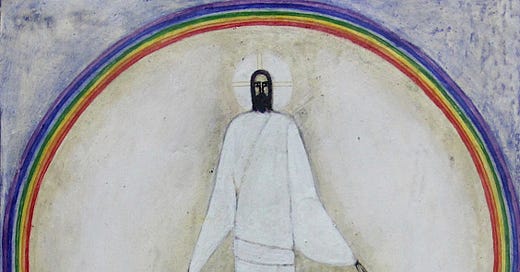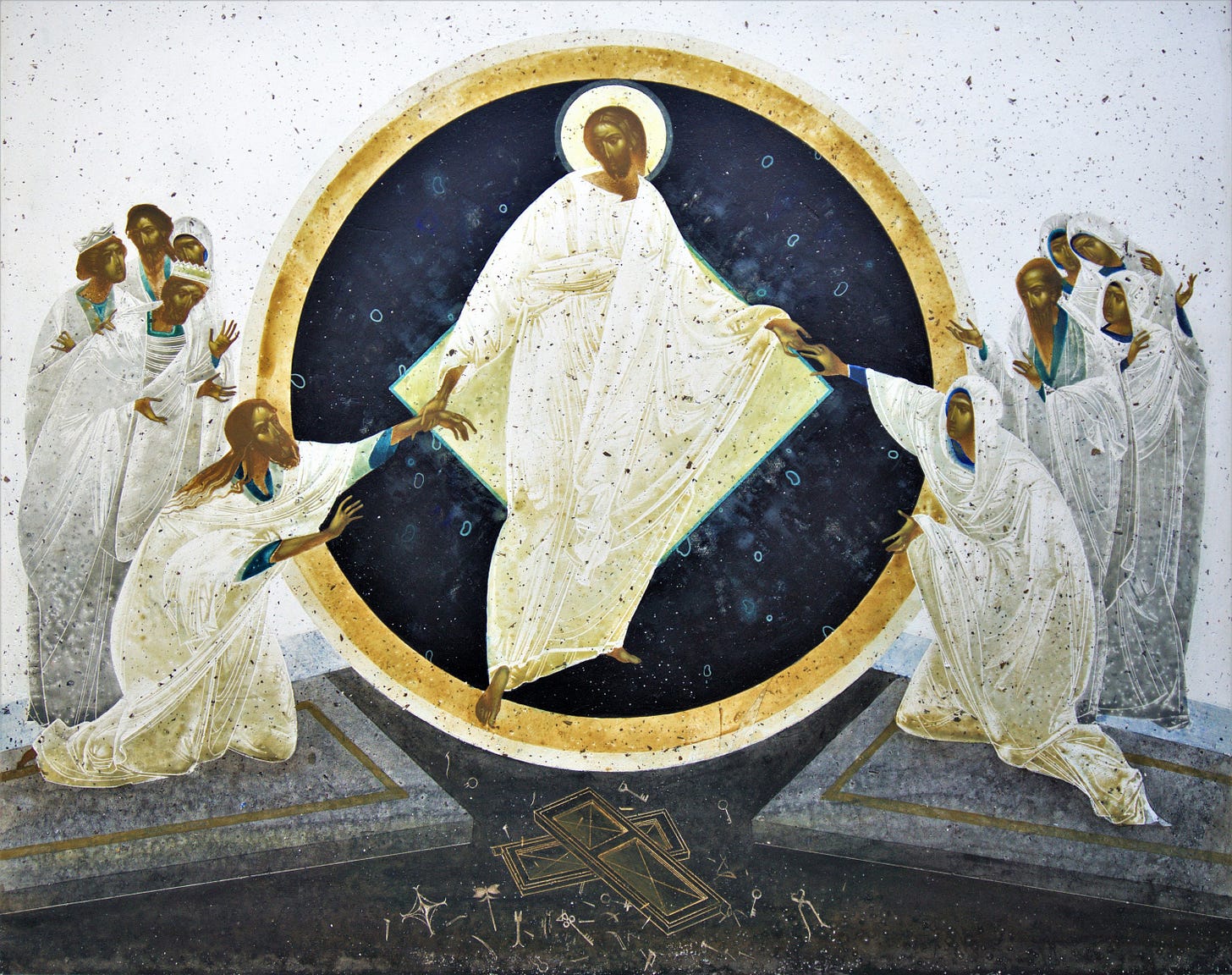As the excitement of New Year's celebrations gives way to the busy routines of January, the preacher’s duty and the Church’s task remain steadfast. Every January, I reflect on my first pastoral act of the new year, treating it as symbolic—a foretaste of the ministry to come, shaped by the rhythms of life and death, joy and sorrow, grief and hope. This perspective is an invitation to imagine what the year ahead may hold.
This year’s initial task was a burial—a graveside service for a beloved member of my congregation who died at the age of 105. On the surface, it may seem like a somber way to begin the year, yet starting the year with the proclamation of the resurrection is precisely where the Chuch is supposed to be. This is not merely a pastoral act; it is the ongoing task of the Church in all times and seasons: to bear witness to the victory of Christ over death.
Jesus said, I am the resurrection and I am life.
Those who believe in me, even though they die, yet shall they live,
and whoever lives and believes in me shall never die.
I am Alpha and Omega, the beginning and the end, the first and the last.
I died, and behold I am alive for evermore,
and I hold the keys of hell and death.
Because I live, you shall live also.
Standing at the graveside, the weight of grief is always palpable. Family members gathered, holding onto one another for comfort, their faces marked by the joy of a life well-lived but also loss. The finality of the moment—the lowering of the casket, the sound of dirt striking wood over the howling of the winter wind—was undeniable. Yet, even in this space of sorrow, the proclamation of the resurrection resounded with hope. "I am the resurrection and the life," Jesus says in John. These words echo across the centuries, meeting us in the bleakest moments with the promise that death does not have the final word.
The Church's task is to carry this proclamation forward, stand in the face of death, and declare the life that comes through Christ. This is not just a seasonal duty reserved for Easter or funerals; it is the heartbeat of Christian witness. At every burial, the Church does not merely speak of death’s inevitability but boldly announces its defeat. "Where, O death, is your victory? Where, O death, is your sting?" (1 Corinthians 15:55).
The burial service is a microcosm of the gospel. It acknowledges the reality of loss and the pain that accompanies it, but it also points to the larger story of redemption and renewal. Our liturgy does not shy away from grief; instead, it sanctifies it, situating it within the hope of resurrection. This duality reflects the Christian understanding of time: the "already" of Christ's triumph and the "not yet" of waiting for its fullness.
Robert Jenson put it like this:
“If the God of Israel had indeed raised someone from the dead, then the promised fulfillment of God’s history with humankind was beginning, and already this specific Jesus had somehow to be Lord.”
Stanley Hauerwas reminds us that the Church's task is to be the community that knows how to wait, even in the face of death, because it knows the one who has conquered death. Stanley wrote:
“The cross is not a sign of the Church's quiet, suffering submission to the powers-that-be, but rather the Church's revolutionary participation in the victory of Christ over those powers. The cross is not a symbol for general human suffering and oppression. Rather, the cross is a sign of what happens when one takes God's account of reality more seriously than Caesar's. The cross stands as God's (and our) eternal no to the powers of death, as well as God's eternal yes to humanity, God's remarkable determination not to leave us to our own devices.”
Our waiting is not passive but expectant, rooted in the knowledge that Christ’s resurrection has redefined history. Every burial service proclaims this truth, showing that even in death, we wait with hope for the consummation of all things in Christ.
Robert Jenson echoes this confidence in his reflection on the Church’s mission:
“The Church is the community created by the message that death is not the end. It is this message that makes us who we are and gives us our identity.”
Beginning the year with a burial underscores this identity. It is a reminder that the Church exists to bear witness to the resurrection in every time and place, transforming even moments of profound grief into proclamations of eternal hope.
This first pastoral duty also calls me to reflect on the nature of hope. Hope, in the Christian sense, is not wishful thinking or naïve optimism. It is a confident trust in what God has already accomplished through Christ. At the graveside, hope does not deny the pain of loss; it asserts that pain is not the end. The promise of resurrection is not escapism; it is the assurance that God is making all things new, even in the face of death.
This morning’s burial and proclamation of resurrection set the tone for the year ahead. They remind us (me) that while we may begin the year in mourning, we do not do so without hope. The same grace that carried us through the past year's trials accompanies us into the new one, assuring us of Christ’s presence in every season.
As for the Church, our calling is clear. Whether in joy or sorrow, in life or death, we are to proclaim the good news of the resurrection. Our calling as the Church seems like an ending, but in Christ, it is part of a much larger story—a story of life, grace, and victory over the grave. And this story is the Church’s task to tell, in every time and place.
So, once again, what it means to be the Church is to stand firm in the hope of the resurrection, to proclaim Christ crucified and risen, and to carry this message of life into a world so often marked by death. This is our work, not just for the beginning of the year but for all the days to come.







